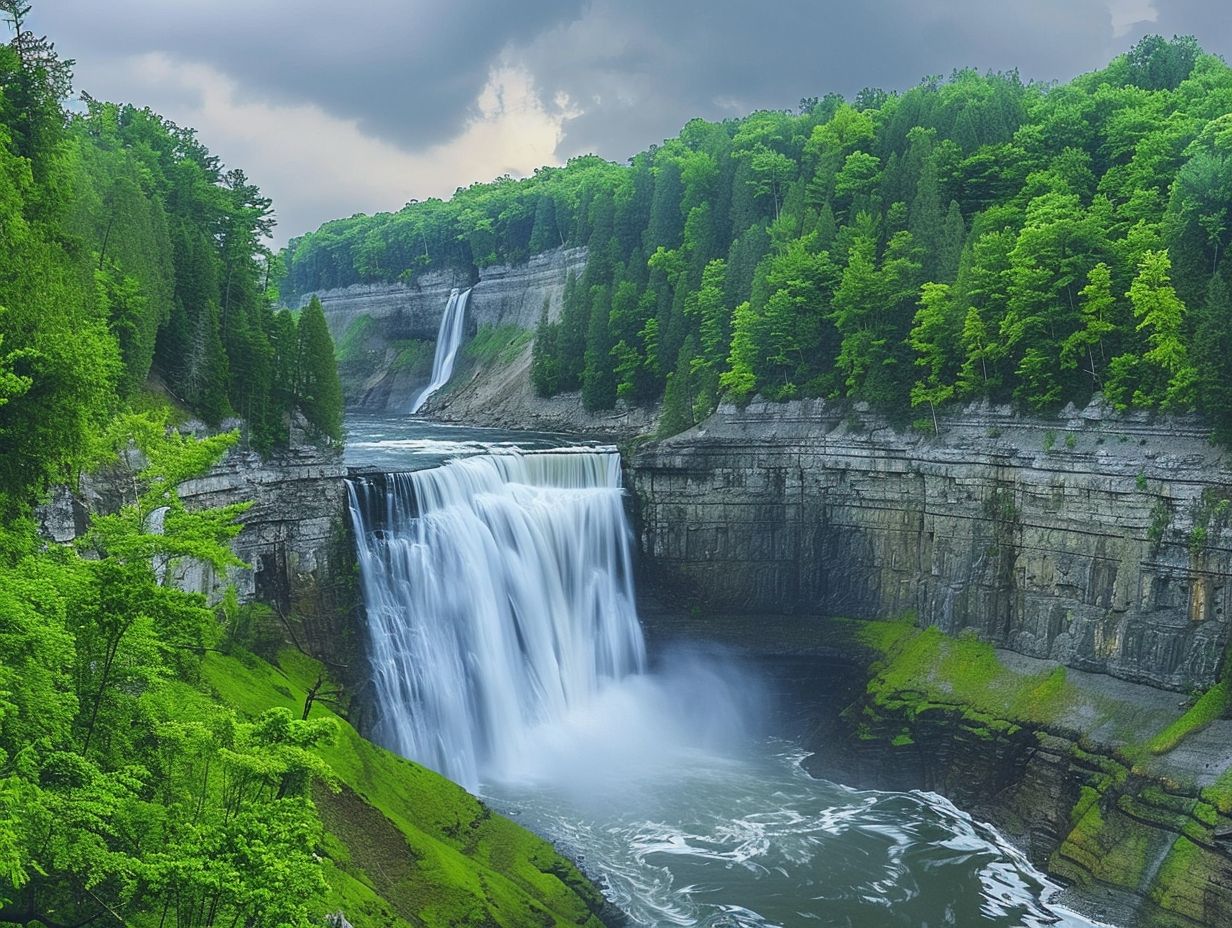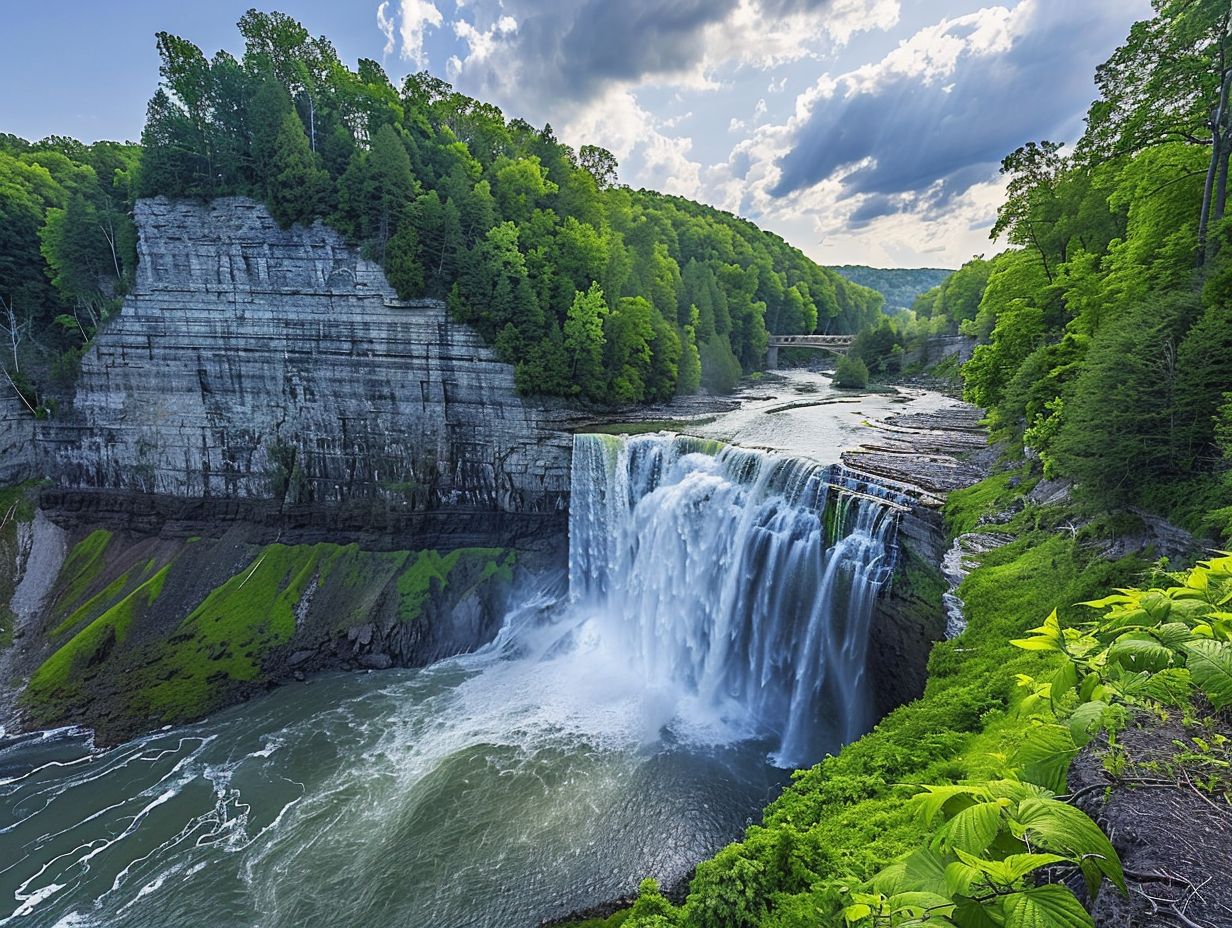Letchworth State Park is renowned for its rich biodiversity, particularly in terms of its plant life. The park is home to various natural communities, each with its unique characteristics and plant species. From the majestic hardwood forests to the serene basin swamps, the Letchworth State Park plants offer a captivating glimpse into the region’s natural wonders.
Hardwood Forest: A Verdant Tapestry
The mature hardwood forest of Letchworth State Park is a true testament to the region’s ecological diversity. Dominated by southern magnolia, sweetgum, live oak, laurel oak, and white oak, this mesic community also features scattered loblolly pine and spruce pine. The understory is equally diverse, with species such as American holly, flowering dogwood, eastern redbud, horse sugar, and beautyberry adding to the visual splendor.
Mixed Woodland: A Harmonious Blend

The mixed woodland community of Letchworth State Park is a unique blend of pine and hardwood species. Shortleaf pine, southern red oak, live oak, laurel oak, post oak, mockernut hickory, bitternut hickory, and white oak are the dominant tree species, with hardwoods frequently co-dominant or even dominant over the pines.
Depression Marsh: A Wetland Oasis
The depression marshes of Letchworth State Park are oval or elliptic-shaped wetlands rimmed by hydrophytic shrubs like St. John’s-wort or mature hardwoods such as live oak. The interior of these marshes consists of either standing water or herbaceous growth, including water-tolerant sedges and grasses. Smaller shrubs or trees like buttonbush, Carolina willow, and swamp cyrilla may also be present.
Basin Swamp: A Forested Wetland Sanctuary
The basin swamps of Letchworth State Park are mostly forested wetlands that hold water for most of the year. The dominant tree species is the swamp tupelo, with other canopy species including bald cypress, slash pine, red maple, and sweetgum. The understory is relatively open, with just a few scattered woody shrubs, and herbaceous growth is limited by the extended hydroperiod.
Bottomland Forest: A Flood-Prone Ecosystem
The bottomland forests of Letchworth State Park are low-lying, mesic to hydric communities prone to periodic flooding. The vegetation consists of a mature, closed canopy of deciduous and evergreen trees, with overstory species such as sweetgum, swamp laurel oak, water oak, live oak, loblolly pine, and spruce pine. Red maple and bald cypress are generally restricted to the portion of bottomland forest nearer the Lake Miccosukee Drain.
Rare and Unique Plant Species
Letchworth State Park is also home to several rare plant species, including the cobblestone tiger beetle, goldenseal, and butterwort. These species add to the park’s ecological significance and contribute to its overall biodiversity.
Educational Opportunities
The Humphrey Nature Center at Letchworth State Park offers year-round environmental education opportunities, focusing on the park’s geology, wildlife, and botany. The center houses interactive exhibits highlighting the plants and animals, geology, and river ecology of Letchworth State Park.
Additionally, the Letchworth Teaching Forest, managed by the University at Buffalo, is an old-growth forest with a variety of native tree and plant species, including Sugar Maples, Beech, other Maples, Cucumber trees, Black Gum, Pin Oaks, and Tulip trees.
Letchworth State Park’s diverse plant communities, rare species, and educational resources make it a true gem for nature enthusiasts and plant lovers alike. Whether you’re exploring the hardwood forests, wading through the wetlands, or learning about the park’s unique ecology, the Letchworth State Park plants are sure to captivate and inspire.
References:
– Florida State Parks: Natural Communities of Letchworth-Love Mounds
– New York State Parks: Humphrey Nature Center
– University at Buffalo: Letchworth Teaching Forest
– New York State Parks: Biodiversity of Letchworth State Park

